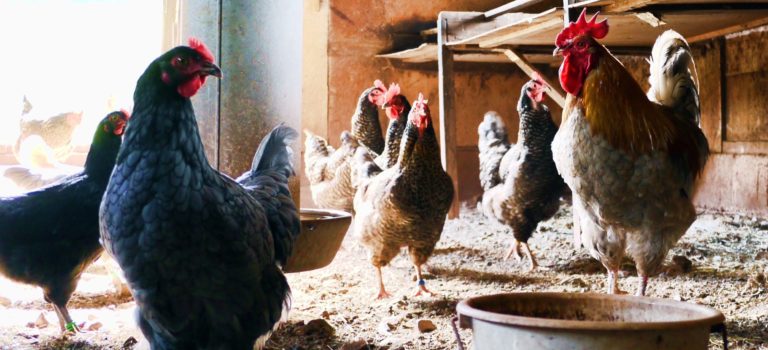Keeping your chickens warm in winter is very important. They are a very hardy bird but do need protection from the extreme cold.
Heat lamps to heat chicken coops is now a thing of the past. They may be the most inexpensive method of heating but they are also the most dangerous. They not only put out 435 degree Fahrenheit temperatures which are severely harmful to your chickens, they are also fire hazards.
Several types of great chicken coop heaters are available in the market today. There is the flat panel chicken coop pet heater, the infrared heater for chickens and the oil-filled radiator heater. The flat panel heater looks a bit like a flat screen tv and can be fixed on any wall or left free standing in the coop. The infrared heater can be hung overhead or mounted on the sides. The oil-filled radiator heater looks like the radiator used in houses and is relatively safe and economical to use.
When to put heating on
Whichever type of heater you would choose, it is recommended that you limit their use only during sub-zero temperatures. These heaters, however, will not heat the entire coop. They will just bring a little extra heat when the chickens curl up near them. With adequate insulation and the hardiness of chickens having high temperatures may just cause them more harm than good.
What Temperature for the Chicken Coop
The recommended range of temperature for a chicken coop is 40 to 80 degrees Fahrenheit. Below 32 degrees Fahrenheit shouldn’t be a problem unless the chickens get wet. Chickens can get frostbite on their combs and wattles. The chicken coop should be well insulated to give your hens a comfortable house.
How to Insulate a Chicken Coop
Chickens carry the best insulation in the animal world – feathers! Instinctively, chickens will not moult in preparation for winter. They will grow a new set of feathers to keep them warm and insulated. They fluff those feathers up to trap warm air against their bodies and huddle close together to share body heat.
While chickens do well in non-insulated coops during summer or in areas with a warm climate, winter can be harsh. They may stop producing eggs if they are not kept warm, and some may even die if not properly taken care of.
One cheap method of insulation is with the use of cardboard. Attaching large sheets of cardboard along the inner side of your coop would be more than adequate. An alternative to cardboard would be old towels and blankets. A large panel of Styrofoam on the roof is another option. It should be noted that Styrofoam insulation should be placed out of reach of the chickens so they won’t peck away at it.
You can also adopt the “Deep Litter” method wherein you layer pine shavings or bales of straw up to about 4 inches on the floor of the coop to minimize cold air that may come from the ground.
Ventilating your chicken coop
Proper ventilation is another key factor in insulating your coop. It is not so much as letting air in but more about letting moisture out. An accumulation of moist air in the coop during the cold months can lead to frostbitten combs and wattles.
Making sure that your chickens can roost is also vital to keep them warm. They naturally roost together and fluff their feathers to keep themselves snug. A roost that is above the ground is perfect.
